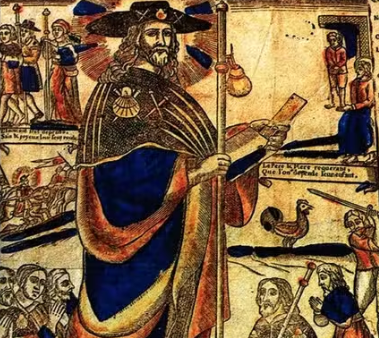University puts ‘trigger’ warning on medieval text over ‘pretty graphic’ miracles
Professors concerned over effects of descriptions of people coughing blood, stomachs bursting and a baby dying at birth

Your support helps us to tell the story
From reproductive rights to climate change to Big Tech, The Independent is on the ground when the story is developing. Whether it's investigating the financials of Elon Musk's pro-Trump PAC or producing our latest documentary, 'The A Word', which shines a light on the American women fighting for reproductive rights, we know how important it is to parse out the facts from the messaging.
At such a critical moment in US history, we need reporters on the ground. Your donation allows us to keep sending journalists to speak to both sides of the story.
The Independent is trusted by Americans across the entire political spectrum. And unlike many other quality news outlets, we choose not to lock Americans out of our reporting and analysis with paywalls. We believe quality journalism should be available to everyone, paid for by those who can afford it.
Your support makes all the difference.University chiefs are giving history students a “trigger” warning over what they say is graphic content in a medieval Christian text that’s part of their course.
Professors at Manchester Metropolitan University are worried about descriptions of miracles in a chronicle of divine healings, called the Miracles of the Hand of St James.
The 890-year-old text describes how a woman “swollen with the disease of dropsy” is cured after praying at St James’ shrine at Reading Abbey until the “pit of her stomach burst forth” and the “floodgates of her bowels were opened”, which purged her of the disease.
Other cases described include “withered” limbs, vomiting poison, demonic encounters and sudden blindness.
One woman reportedly had a foot “incapable of acting like a foot” with her toes and heel reversed, but was cured after visiting Reading Abbey and “coughing up a great deal of blood”.
Another case describes how a mother lost her baby in a difficult birth, which the university notes “in particular might be upsetting to some people”.
The 28 alleged miracles were attributed to the mummified hand of St James the apostle at Reading Abbey, where it is still kept.
Students due to study the chronicles are told: “Warning. Some of the miracles can be pretty graphic and may be off-putting to some,” The Daily Telegraph reported.
The warning note also advises that the 1970 translation of the mediaeval text into modern English, by Professor Brian Kemp, contains language “that is now considered offensive” in relation to “mental and physical health”.
A Manchester Metropolitan University spokesman told the Daily Mail: “Some of the miracles can be pretty graphic and may be offputting to some.
“Miracle XXI in particular might be upsetting to some people (it deals with a woman surviving the stillbirth of her child).
“Also, Kemp wrote the article in 1970 and some of the language he uses, in reference to mental and physical health, is now outdated.”
For at least five years, UK universities have been increasingly introducing “trigger warnings” to give students notice of any potentially “upsetting” material in lectures, echoing a trend in US colleges to try to protect young people’s mental health.

The warnings are given for subjects ranging from war photography and homelessness to topless models and underage sex.
But some academics claim the trend could stifle intellectual debate.



Join our commenting forum
Join thought-provoking conversations, follow other Independent readers and see their replies
Comments